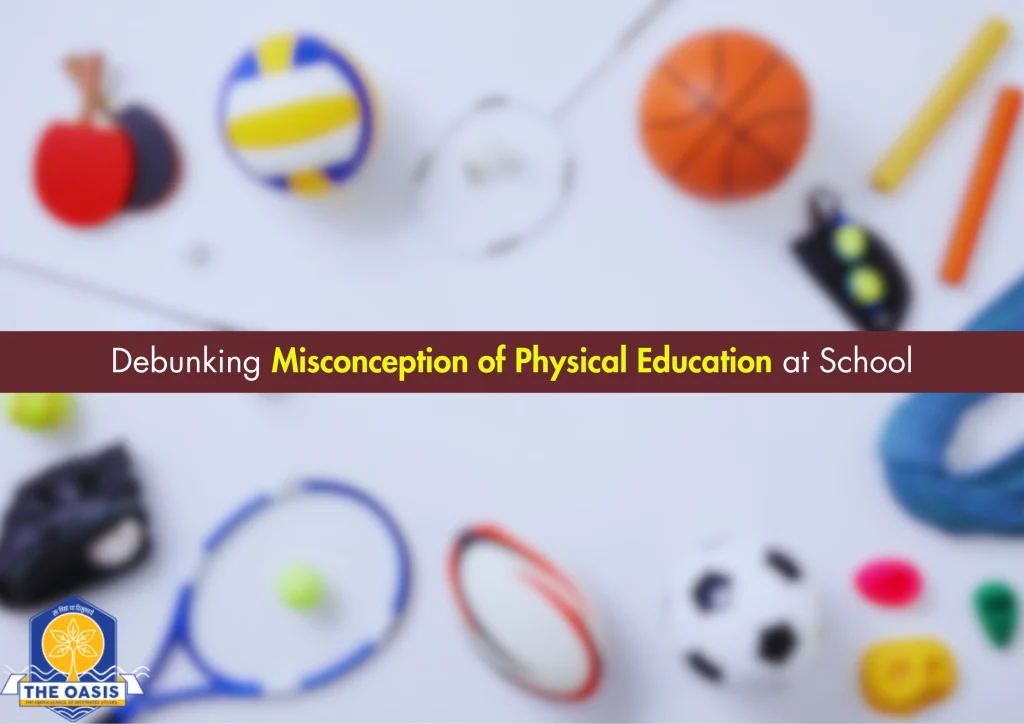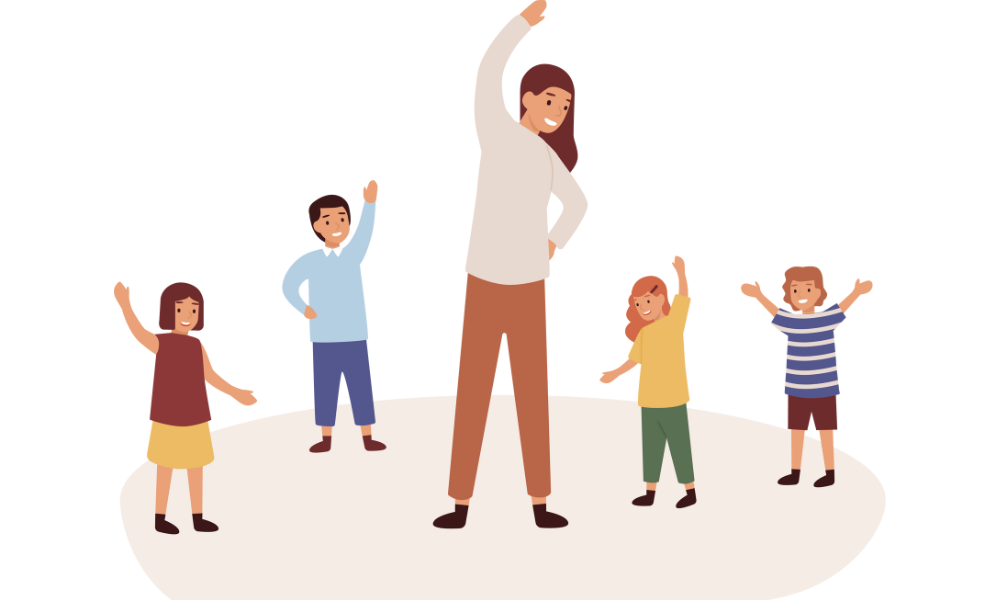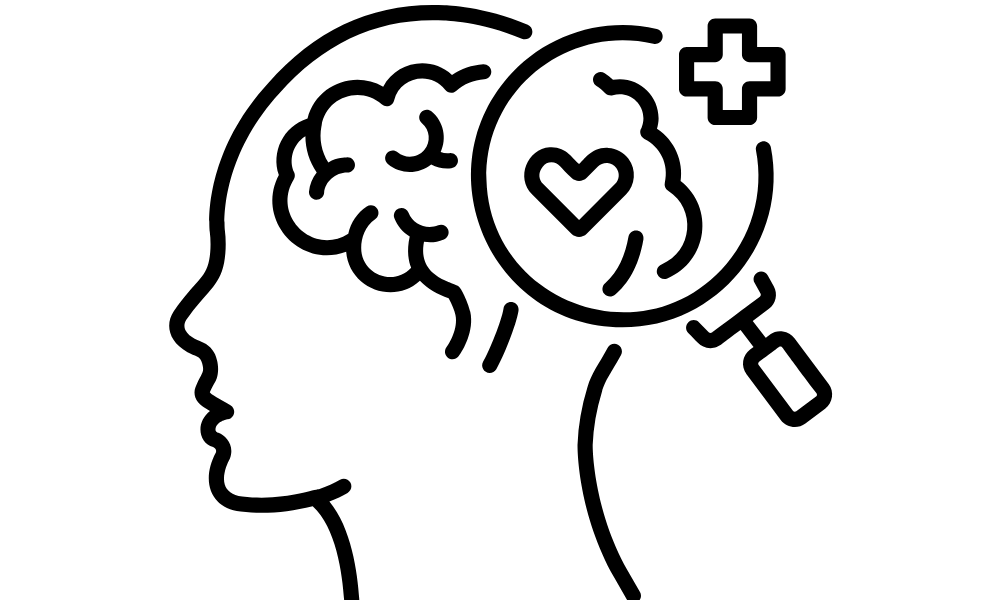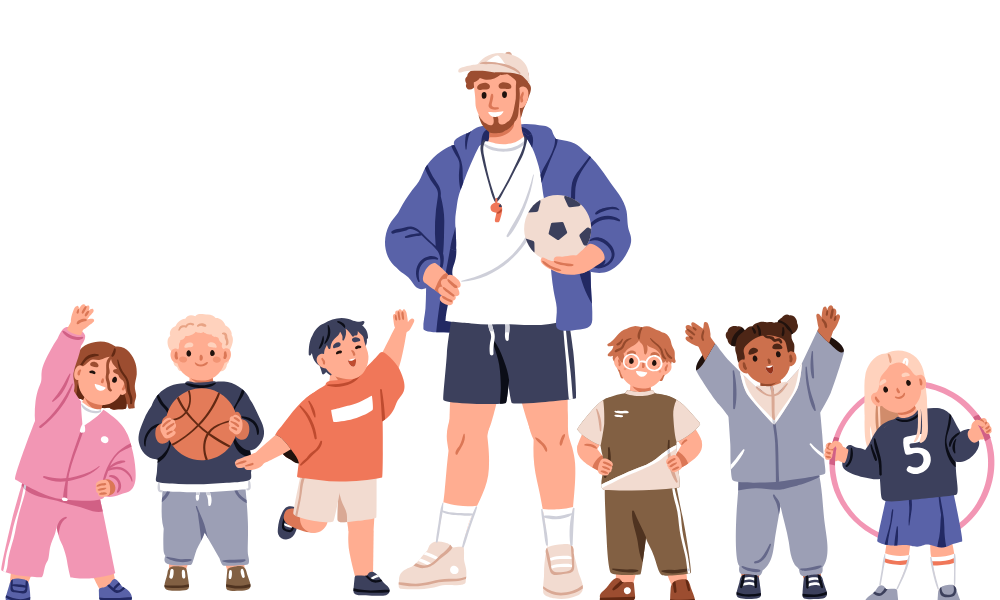
Physical education (PE) is often misunderstood and undervalued in the academic framework. For years, parents, students, and sometimes even educators have fallen prey to the misconception of physical education, assuming it’s just about playing games, running around, or giving students a break from academics. This narrow view does a disservice to a subject that plays a critical role in a child’s holistic development—physically, emotionally, socially, and even academically.
In reality, physical education is a well-rounded discipline designed to build essential life skills such as teamwork, discipline, resilience, and personal responsibility. It enhances brain function, supports emotional health, and builds the foundation for a lifetime of physical well-being.
Common Misconception of Physical Education:

Let’s address some of the most prevalent myths surrounding physical education:
1 . PE is only for athletes:
Many believe that PE classes are reserved for students who are naturally athletic. This is far from the truth. Physical education is inclusive and designed to cater to all students, regardless of their physical abilities. Its aim is to promote healthy living, motor skills, coordination, and a positive relationship with movement—not to create future Olympians.
2. PE doesn’t support academic performance:
One major misconception of physical education is that it distracts from academic learning. In fact, numerous studies prove that physical activity improves memory retention, concentration, and even test scores. A child who engages in regular exercise is more likely to perform better in subjects like math and reading.
3. It’s just ‘free play’ or fun time:
While PE can be fun and engaging, it’s far from unstructured. The curriculum is designed to teach specific skills—like spatial awareness, strategic thinking, and goal-setting. These lessons are planned, assessed, and continuously refined to ensure growth and progression.
4. PE is not as important as STEM or language subjects:
Another common misconception of physical education is that it lacks academic merit. On the contrary, PE supports brain development, reduces anxiety, and fosters a growth mindset, all of which enhance performance in other subjects. In a world where mental health challenges are on the rise among students, PE provides an essential outlet.
5. Physical education is outdated or non-essential in the digital age:
While students today are growing up in a tech-dominated environment, the need for physical activity is more critical than ever. With increasing screen time, sedentary lifestyles, and rising obesity rates, PE acts as a counterbalance. Modern PE programs even incorporate technology through fitness tracking and virtual challenges, making them more relevant to today’s learners.
Why Physical Education Is More Relevant Than Ever?

The role of physical education goes beyond physical fitness. It is instrumental in building:
- Mental resilience: Through competitive games and physical challenges, students learn to handle failure and bounce back.
- Teamwork & leadership: Activities require collaboration, communication, and shared responsibility.
- Body awareness and confidence: Students who understand their bodies are more likely to feel confident and adopt lifelong healthy habits.
- Emotional regulation: Regular movement helps in balancing moods, managing stress, and improving sleep patterns.
All these outcomes are crucial to preparing students for life beyond school.
Breaking Stereotypes in Residential Schools
In institutions like Boys Boarding Schools in Dehradun, the traditional view of physical education is undergoing a transformation. These schools are known not just for their academic excellence but also for comprehensive physical training programs.
They treat PE as an integral part of the curriculum, recognizing its importance in character development, discipline, and leadership. Students at these schools are encouraged to participate in inter-school sports, fitness clubs, and adventure activities—all rooted in structured physical education.
Such an approach is a far cry from the outdated misconception of physical education that sees it as a break or filler subject. Instead, it becomes a core part of shaping well-rounded, confident, and responsible individuals.
The Psychological & Social Benefits:

Another major myth is that PE only benefits the body. The truth is, it strongly influences emotional intelligence and social dynamics. Physical activities often bring students together, encouraging peer support, conflict resolution, and understanding diversity. These are vital life skills that students won’t get from textbooks alone.
Moreover, physical education provides a platform where students who may not excel academically find their strength and self-worth. This boost in self-esteem can carry over into classroom performance, attendance, and overall well-being.
What Should an Ideal PE Curriculum Look Like?

To truly dismantle the misconception of physical education, schools must:
- Integrate PE into the daily routine rather than treating it as an occasional session.
- Focus on fitness assessments, skill development, teamwork activities, and mindfulness exercises.
- Encourage participation in a variety of sports, not just traditional games.
- Use assessments that track student progress in areas like flexibility, endurance, and coordination—just like we assess academic progress.
- Provide access to trained PE teachers who understand child psychology and sports science.
By making PE a valued subject rather than an afterthought, schools send a clear message that student health—both mental and physical—is a top priority.
Moving Forward with Better Understanding
Parents and educators alike must shift their mindset. Recognizing and addressing the misconception of physical education will ensure that students receive the complete education they deserve—one that balances the mind, body, and soul. Physical education is not the opposite of academics; it’s the missing piece that makes academic success sustainable and meaningful.
Frequently Asked Questions (FAQs)
Ques 1. Is physical education only for athletic students?
Ans. No, this is a misconception of physical education. PE is designed for all students to improve fitness, teamwork, and mental well-being.
Ques 2. Why do people think PE is not important?
Ans. This misconception of physical education stems from outdated views that don’t reflect its impact on mental and physical health.
Ques 3. How is PE structured in modern schools?
Ans. Today’s PE is curriculum-based and assessed, breaking the misconception of physical education being unstructured play.
Ques 4. Why is PE important in early schooling?
Ans. It sets habits for lifelong health, challenging the misconception of physical education being more suitable for older students.
Ques 5. Should physical education be compulsory in schools?
Ans. Absolutely. Making it optional feeds the misconception of physical education being less important than academics.
Ques 6. What are the emotional benefits of physical education?
Ans. It helps students manage stress, build self-esteem, and develop emotional regulation, debunking the misconception of physical education being just physical.



